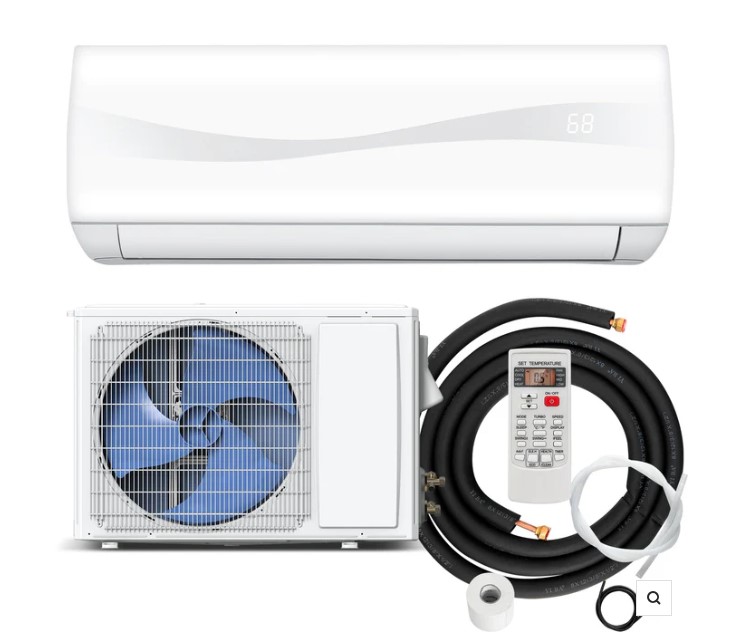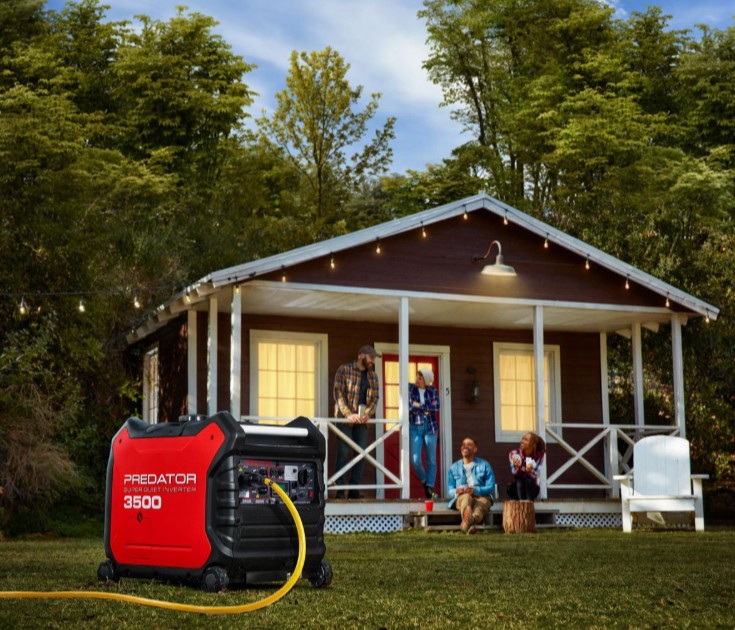Split AC&Heat Unit.
A ductless split system air conditioner, often referred to as a mini-split system, is a versatile and energy-efficient cooling (and sometimes heating) solution. Here’s why they are considered a great option in certain scenarios:
Benefits of Ductless Split System Air Conditioners
- Energy Efficiency
- They often have high SEER (Seasonal Energy Efficiency Ratio) ratings, making them more energy-efficient compared to traditional HVAC systems.
- No energy loss through ducts (ductwork in central systems can lose up to 30% of energy).
- Zoned Comfort
- Mini-splits allow zoning, meaning you can cool (or heat) specific rooms or areas without affecting the rest of the home. Each indoor unit can be controlled independently.
- Perfect for spaces with inconsistent temperature needs.
- Easy Installation
- Installation is less invasive than installing a ducted system. A small hole (about 3 inches in diameter) is made to connect the indoor and outdoor units.
- Ideal for older homes without ductwork or in newly added spaces like garages, basements, or attics.
- Compact Design
- Indoor units are sleek and unobtrusive, mounted on walls, ceilings, or floors.
- Outdoor units are smaller than traditional central AC condensers.
- Heating and Cooling
- Many models include heat pump technology, which allows them to provide heating in the winter as well as cooling in the summer.
- Improved Air Quality
- Built-in filtration systems can improve indoor air quality by removing dust, allergens, and contaminants.
- Ducts in central systems can harbor dust and mold, which is avoided in ductless systems.
- Quiet Operation
- Ductless systems are much quieter than traditional central systems because the noisy compressor is located outside, and indoor units are designed to operate quietly.
When Are They Ideal?
- Renovations or Additions: Perfect for spaces like garages, sunrooms, or finished basements where extending ductwork isn’t feasible.
- Older Homes: A good option for houses without existing ductwork.
- Energy-Sensitive Homes: Ideal for people looking to reduce their energy consumption and lower utility bills.
- Customized Comfort: Great for families with varying temperature preferences in different rooms.
Possible Downsides
- Initial Cost: They can be more expensive upfront than window units or central systems, though they save money in the long term.
- Appearance: Some people don’t like the look of wall-mounted units inside their homes.
- Regular Maintenance: Filters in the indoor units must be cleaned regularly for optimal performance.
1. What’s the purpose of the system?
- Are you looking to cool/heat your entire home or just a specific area (like a garage, attic, or new addition)?
2. Do you currently have ductwork?
- If not, ductless systems are an excellent option because installing ductwork can be costly and invasive.
3. How important is energy efficiency to you?
- If lowering your energy bills and reducing energy waste are priorities, ductless systems might be a great match.
4. What’s your climate like?
- Ductless systems with heat pumps work well in most climates, but they’re particularly efficient in moderate climates. For extremely cold regions, you might need a specific model designed for low temperatures.
5. What’s your budget?
- Ductless systems generally cost more upfront than window or portable AC units but are less expensive than central systems when ductwork isn’t already in place.
- The cost of a ductless system typically ranges from $3,000–$8,000 per zone, depending on size and features.
6. Do you prefer zoned control?
- If you’d like different rooms to have independent temperature settings, ductless systems excel at this.
7. Aesthetic Concerns
- Are you okay with having wall-mounted units, or would you prefer something more concealed? (Ceiling cassettes and floor-mounted units are alternatives to the standard wall units.)


